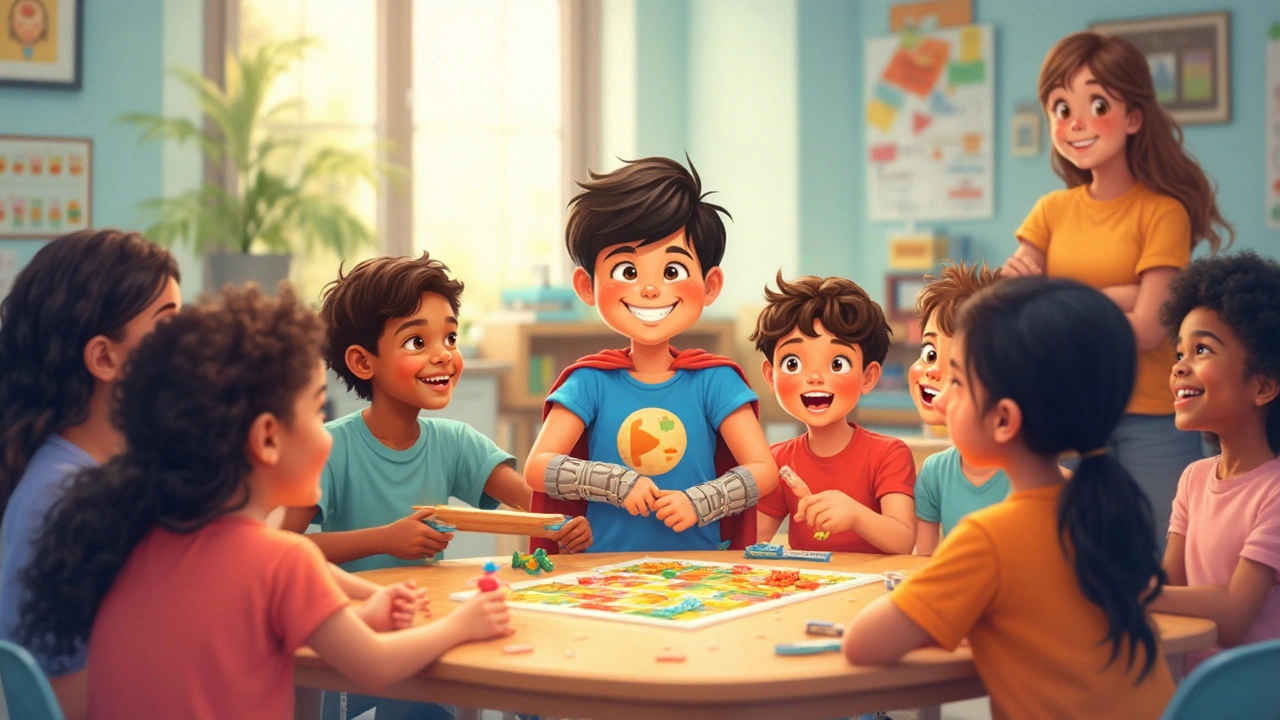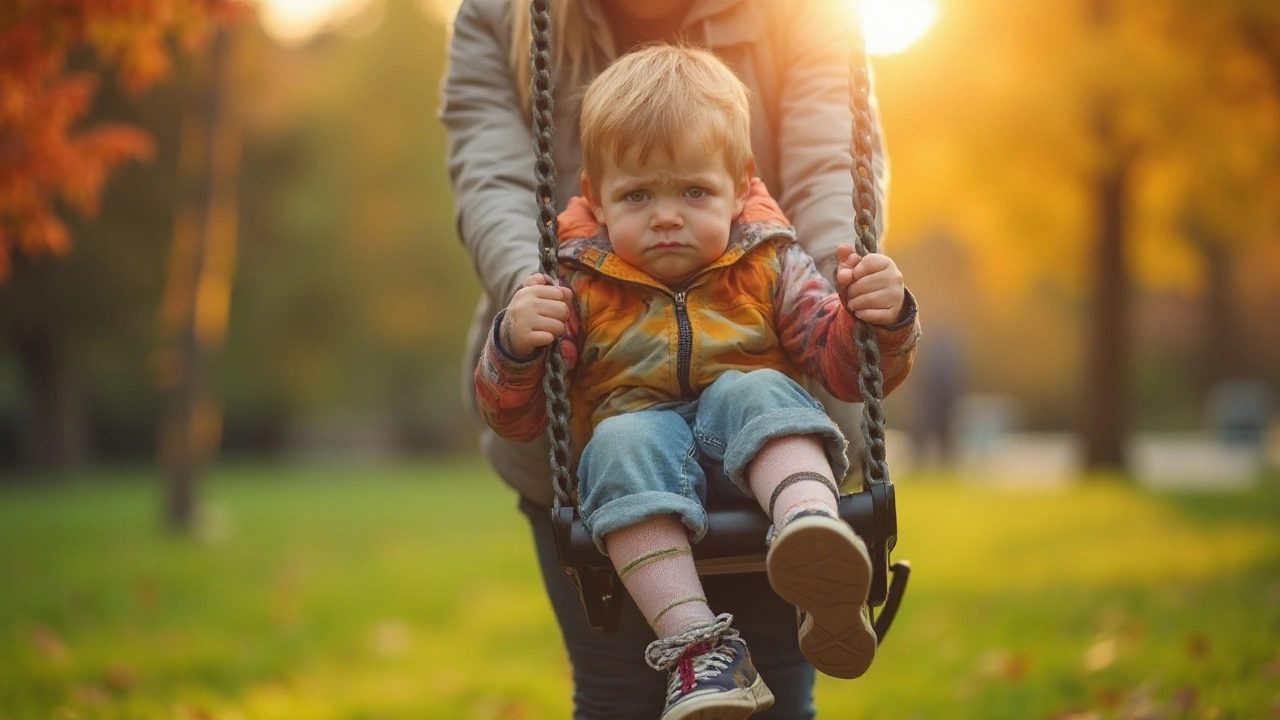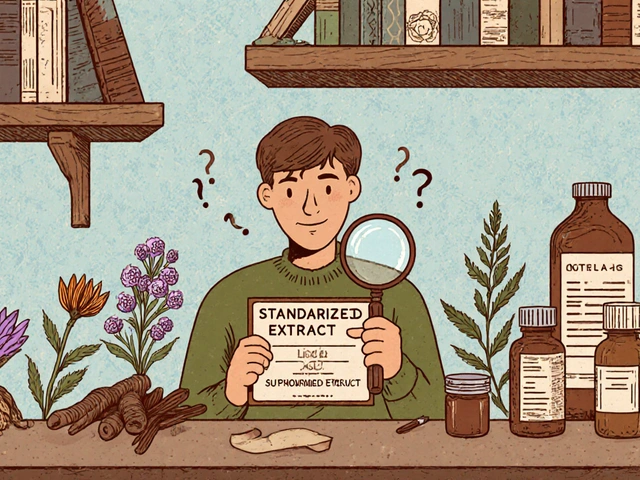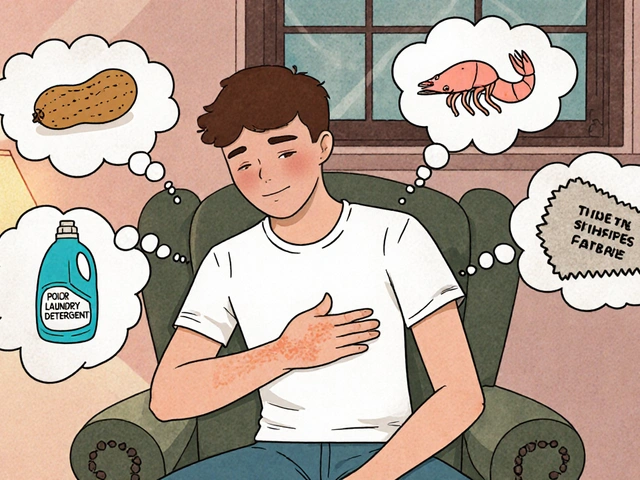How Juvenile Arthritis Shapes a Child's Quality of Life
Juvenile Arthritis is a chronic autoimmune disease that inflames one or more joints in children under 16, marked by pain, swelling, and limited motion. While it shares features with adult arthritis, its impact on a growing body and developing mind creates a unique set of challenges that ripple through school, play, and family life.
Physical Health: What the Body Experiences
Joint inflammation often first appears in the knees, hands, or feet, causing stiffness that is worst after periods of rest. Pediatric Rheumatology the medical specialty focused on diagnosing and treating rheumatic diseases in children uses a blend of clinical exams and imaging to track disease activity. Common physical sequelae include:
- Reduced range of motion leading to difficulty with running, climbing, or writing.
- Growth disturbances; inflammation around growth plates can cause leg length discrepancy.
- Joint deformities if inflammation is uncontrolled for years.
Beyond the joints, children often report chronic fatigue, a symptom linked to the body’s constant immune activation. Fatigue amplifies the sense of pain, creating a vicious cycle that can limit participation in everyday activities.
Emotional and Social Ripple Effects
Living with pain reshapes a child’s emotional landscape. Studies from leading children’s hospitals show that up to 40% of kids with juvenile arthritis experience anxiety or depressive symptoms. The condition can erode self‑esteem, especially when peers notice differences in mobility or when the child must miss birthday parties.
Psychosocial Development the process by which children acquire emotional, social, and cognitive skills may stall if arthritis restricts playtime or limits social interactions. Isolation can fuel a sense of “being different,” which in turn raises stress hormones that may exacerbate inflammation.
School Life and Everyday Routines
School attendance is a key indicator of quality of life for children with chronic illness. Research from the National Institute of Arthritis indicates that children with active disease miss an average of 12 days per semester, compared to 3 days for healthy peers. Absences trigger gaps in learning and strain relationships with teachers.
Physical education (PE) poses a complicated dilemma: complete exclusion removes the benefits of exercise, yet unmodified participation can worsen joint pain. School Attendance the regular presence of a student in classroom and related activities policies that incorporate flexible schedules, rest breaks, and individualized PE plans have been shown to improve academic outcomes and reduce absenteeism.
Medical Management: Controlling Inflammation
Effective disease control is the cornerstone of preserving quality of life. The therapeutic arsenal includes:
- Disease‑Modifying Antirheumatic Drugs (DMARDs) medications that slow or halt the immune‑mediated damage to joints, such as methotrexate.
- Biologic Therapy targeted agents that block specific inflammatory pathways, like TNF‑α inhibitors, often reserved for moderate‑to‑severe cases.
- Non‑steroidal anti‑inflammatory drugs (NSAIDs) for acute pain relief.
- Low‑dose corticosteroids for short‑term flare control.
Regular monitoring by Pediatric Rheumatology specialists ensures medication dosing is safe for a child's developing liver and kidneys.

Physical Therapy and Lifestyle Adjustments
Medication alone does not restore function. Physical Therapy a structured program of exercises, manual techniques, and education to improve mobility and strength helps maintain joint range, builds muscle support, and teaches pain‑management tactics. Key components include:
- Hydrotherapy - warm water reduces joint stress while allowing active movement.
- Gentle stretching - maintains flexibility and prevents contractures.
- Strengthening - focuses on surrounding muscles to share joint load.
Families that incorporate regular activity report higher Quality of Life the overall perception of well‑being, including physical, mental, and social domains scores for the child.
Non‑Medical Strategies to Boost Everyday Well‑Being
Beyond drugs and therapy, several practical measures help children thrive:
- Pain‑assessment tools (e.g., Wong‑Baker Faces Scale) empower kids to communicate discomfort early, prompting timely adjustments.
- Adaptive equipment such as shoe inserts, splints, or ergonomic desks reduces strain during school and home activities.
- Peer support groups connect families, offering emotional validation and sharing of coping tactics.
- Parental education improves confidence in medication administration and recognizing flare signs.
When parents model positive coping-maintaining routines, encouraging safe play, and celebrating small victories-children often mirror that resilience.
Comparison of Juvenile Arthritis and Adult Rheumatoid Arthritis
| Feature | Juvenile Arthritis | Adult Rheumatoid Arthritis |
|---|---|---|
| Typical Onset Age | Under 16 years | 30‑60 years |
| Commonly Affected Joints | Knees, ankles, wrists; can involve growth plates | Hands, wrists, feet; symmetric pattern |
| Growth Impact | Potential limb length discrepancy | Not applicable |
| Response to DMARDs | Usually good, but dose adjusted for size | Standard adult dosing |
| Long‑term Prognosis | Variable; many achieve remission with early treatment | Chronic; may lead to joint destruction |
Understanding these distinctions helps clinicians set realistic expectations and tailor interventions that protect a child’s growing body.
Related Concepts and Next Steps
Exploring adjacent topics deepens the view of a child’s journey:
- Fatigue Management - strategies like scheduled naps and balanced nutrition.
- Growth Monitoring - regular height and weight charts to catch early delays.
- Family Counseling - addresses parental stress and sibling dynamics.
- Transition Care - planning for the move from pediatric to adult services during late adolescence.
Readers interested in the broader context may explore articles on “autoimmune diseases in children,” “pain assessment tools for pediatrics,” and “school accommodation guidelines for chronic illness.”

Frequently Asked Questions
Can juvenile arthritis be cured?
There is no definitive cure, but early and aggressive treatment can induce long‑term remission in many children, allowing them to lead normal lives.
How is disease activity measured in kids?
Clinicians use the Juvenile Arthritis Disease Activity Score (JADAS), which combines joint counts, physician’s global assessment, parent/child global rating, and inflammatory markers like ESR.
What accommodations can schools provide?
Common adjustments include modified PE activities, extra time for transitions between classes, permission to sit during lessons, and a written emergency action plan for flare‑ups.
Are biologic therapies safe for children?
Biologics have a well‑documented safety profile in pediatric trials. Monitoring for infections and routine lab work is essential, but many families report significant symptom relief.
How can parents support their child's emotional health?
Open communication, encouraging participation in adapted social activities, and connecting with support groups are key. Professional counseling can also help the child develop coping skills.







20 Comments
Graham Smith
September 25, 2025 at 02:18
The article correctly outlines the clinical aspects, however there are a few minor errors in the speling of "hydrotherapy".
Jeremiah Morgan
September 25, 2025 at 21:45
I commend the thoroughness of this piece; it balances medical detail with empathy. The discussion of school accommodations is particularly valuable for parents navigating IEPs. While the language is a bit formal, the optimism shines through. It is heart‑warming to see emphasis on peer support groups. Keep up the excellent work, and thank you for shedding light on such an important topic.
nina greer
September 26, 2025 at 17:12
A superficial overview, lacking nuance.
Montague Tilmen
September 27, 2025 at 12:38
Our healthcare system is far superior; we shouldn't be copying European guidelines that waste taxpayers' money.
Clarise Wheller
September 28, 2025 at 08:05
While I appreciate your passion, it's important to keep the focus on evidence‑based practices that benefit all children, regardless of nationality.
Riley Fox
September 29, 2025 at 03:32
Ah, the intricate tapestry of juvenile arthritis! One could argue that the disease is not merely a physiological anomaly, but a philosophical inquiry into the nature of pain itself; after all, pain is both a sensory experience and a narrative we construct. Consider the cascade of cytokines as a metaphor for societal pressures-each inflammatory signal echoing the demands placed upon a child's developing self. Hence, multidisciplinary therapy becomes a dialectic, synthesizing pharmacology with physiotherapy in a Hegelian synthesis of body and mind. Moreover, the psychosocial dimension is the thesis that challenges the medical dogma; the antithesis is the isolation many patients feel. The synthesis? A community of support that transcends the clinic walls. 😊👍
David Stephen
September 29, 2025 at 22:58
Your philosophical framing is intriguing; integrating mind‑body concepts can indeed empower families.
Roberta Giaimo
September 30, 2025 at 18:25
👍 Great summary!
Tom Druyts
October 1, 2025 at 13:52
Fantastic post! I love how it balances science with real‑world tips. Keep the good vibes coming.
Julia C
October 2, 2025 at 09:18
They don't want you to know that the pharma giants are hiding the real cure!
John Blas
October 3, 2025 at 04:45
Interesting theory, but evidence suggests otherwise.
Darin Borisov
October 4, 2025 at 00:12
From an epistemological standpoint, the discourse surrounding juvenile arthritis necessitates a granular interrogation of both pathophysiological mechanisms and sociocultural determinants of health. First, the immunological cascade involving TNF‑α, IL‑1, and IL‑6 embodies a prototypical pro‑inflammatory milieu that precipitates synovial hyperplasia. Second, the ontogeny of skeletal growth plates imposes a unique vulnerability: unchecked inflammation can engender epiphyseal dysplasia, culminating in limb length discrepancy. Third, the pharmacotherapeutic armamentarium-encompassing methotrexate, biologic agents, and NSAIDs-requires dose titration calibrated to pediatric pharmacokinetics, thereby averting iatrogenic hepatotoxicity. Fourth, adherence patterns are modulated by caregiver health literacy; thus, structured educational interventions are paramount. Fifth, physical rehabilitation, particularly hydrotherapy, exploits buoyancy to mitigate joint loading while preserving range of motion. Sixth, psychosocial sequelae, including anxiety and depressive phenotypes, correlate with inflammatory biomarkers, suggesting a bidirectional psychoneuroimmunologic feedback loop. Seventh, school accommodation policies, when harmonized with individualized education programs, dramatically enhance academic continuity. Eighth, longitudinal cohort studies have demonstrated that early aggressive treatment yields remission rates exceeding 60 % within two years. Ninth, transition of care from pediatric rheumatology to adult services mandates a meticulously crafted handover protocol to preserve therapeutic gains. Tenth, health economic analyses reveal that upfront investment in multidisciplinary care offsets downstream costs associated with disability. Eleventh, emerging biomarkers such as S100 proteins hold promise for predictive modeling of flares. Twelfth, genetic polymorphisms in HLA‑DRB1 may stratify risk for severe disease phenotypes. Thirteenth, patient-reported outcome measures, like the PROMIS Pediatric Pain Interference scale, provide granular insight into functional impact. Fourteenth, telemedicine platforms have been validated as efficacious adjuncts for routine monitoring, especially in geographically remote populations. Fifteenth, family-centered counseling mitigates caregiver burnout, fostering a resilient support system. Sixteenth, interdisciplinary research consortia are essential to harmonize clinical guidelines across continents, thereby standardizing care pathways. In summation, a comprehensive, evidence‑based, and patient‑centric paradigm is indispensable for optimizing quality of life in children afflicted with juvenile arthritis.
Sean Kemmis
October 4, 2025 at 19:38
Your analysis overlooks basic ethics.
Nathan Squire
October 5, 2025 at 15:05
Oh sure, because every pediatrician moonlights as a philosopher, right? In reality, the data speaks louder than lofty analogies. Still, kudos for trying to elevate the conversation.
satish kumar
October 6, 2025 at 10:32
However, - contrary to popular belief - the data does not support that claim.
Kimberly Dierkhising
October 7, 2025 at 05:58
The psychosocial dimension is often under‑appreciated in mainstream discussions.
Rich Martin
October 8, 2025 at 01:25
Dude, you hit the nail on the head; this whole thing is a classic case of mind‑body interplay.
Buddy Sloan
October 8, 2025 at 20:52
Sending love to all families dealing with this tough journey 😊
SHIVA DALAI
October 9, 2025 at 16:18
Alas, the shadows of chronic pain loom over the innocent youth.
Vikas Kale
October 10, 2025 at 11:45
In sum, a multidisciplinary approach - integrating rheumatology, physiotherapy, and psychosocial support - is the gold standard.